True cinnamon (Cinnamomum zeylanicum), today a well known and much used spice, was once the stuff of legend - an ancient, esteemed and sought after aromatic in the spice trade. An essential oil is obtained from the inner bark and leaf of the cinnamon tree.
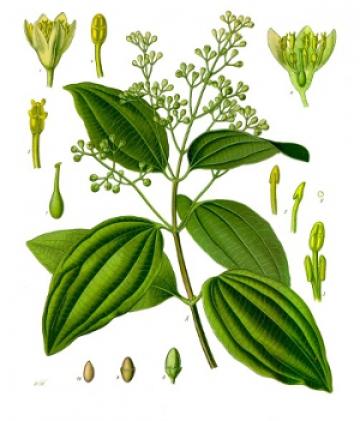
Distribution
The genus Cinnamomum is comprised of around 250 different species. True cinnamon is botanically identified as Cinnamomum verum or Cinnamomum zeylanicum. The scented evergreen cinnamon tree grows in wet tropical regions, primarily in Sri Lanka, southern India and South East Asia. The culinary spice, referred to as "true cinnamon" or "Ceylon cinnamon", is obtained from the dried bark of the Cinnamomum zeylanicum tree.
A related tree, Cinnamomum cassia, found in South East Asia and Java, yields a spice known as "cassia" or "Chinese cinnamon".
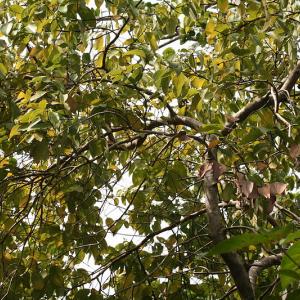
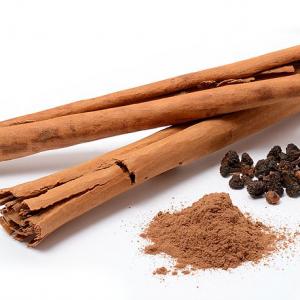
History and Mythology
The word cinnamon stems from the words "chini" meaning "China", the Arabian "mama" and the Greek "amomum", both translating to "fragrant spice plant". Cassia bark was employed by the Chinese as incense, medicine and spice from around 5000 years BCE and this is thought to be the cinnamon species of antiquity.
In Ancient Egypt it was possibly the cassia variety that was used for incense, perfumery and mummification and as a preservative and flavouring in food.
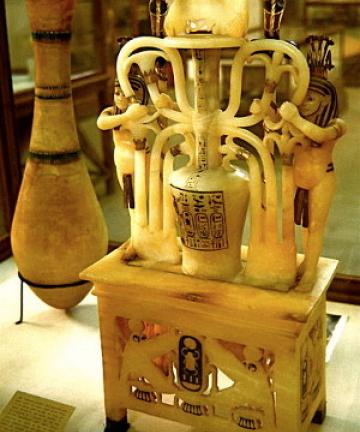
By Greek and Roman times, both cassia and true cinnamon were known and used as distinct spices. Cinnamon quills were added to fires in religious rites and had medicinal applications in classical times, often steeped in wine before use. The Romans manufactured a costly perfume known as "Cinnamomum" from both the bark and cinnamon leaf.
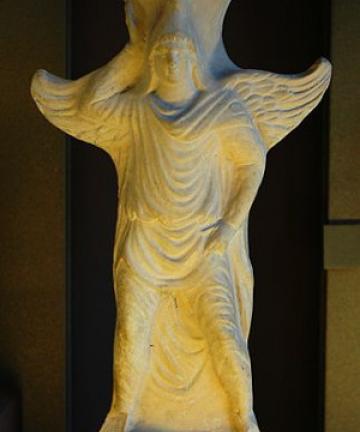
In the Ancient world, cinnamon was a very precious and highly valued spice and a unique ingredient that paired well with lush floral scents in perfumery, obtained from unknown, mysterious lands.
The exact geographical sources of cinnamon were once shrouded in mystery as the Arab traders wanted to maintain their hold on the lucrative trade in cinnamon. It was said that in the lands of Arabia, people used cinnamon and cassia instead of sticks for firewood, such was their abundance. Other fanciful tales were fabricated about cinnamon, including that of the cinnamologus.
A cinnamologus is described in the writings of the Ancient Greek historian Herodotus as a mythical bird of Arabia, that built its nest from cinnamon sticks on mountain precipices which were unreachable by man. Men would place bait around the nests that was carried back by the birds. The weight of the bait would cause the nests to fall to the ground, allowing them to collect the cinnamon sticks which were then used in trading.
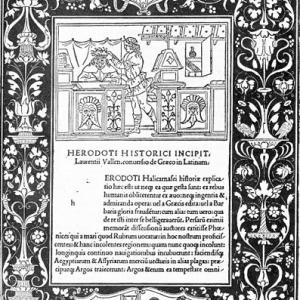
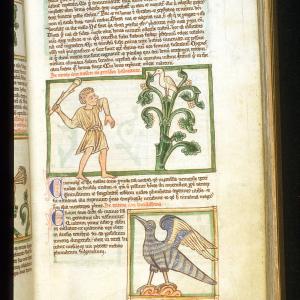
Cinnamon production was established as early as 1275 CE in Ceylon. The spice was brought to Europe by the Venetian traders in the Middle Ages. Portuguese colonists took over the trade of cinnamon from the Sinhala king in exchange for military favours in the 16th century, to establish a profitable and powerful monopoly. The Dutch then took over this trade for 150 years, leading to a power shift in Europe. The British abolished this state monopoly in 1833 and by this time the value of cinnamon had gradually fallen to levels last seen before the early days of overland trade.
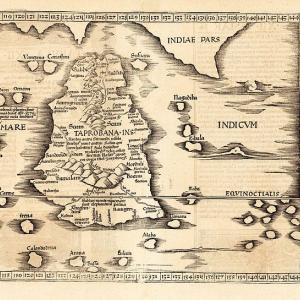
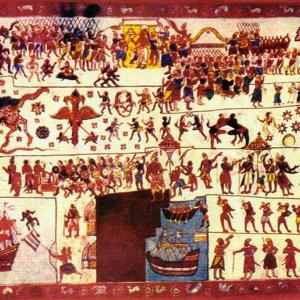
Usage
Cinnamon, either ground or in quill form, has been prized for its exotic and singular flavour and aroma in the gastronomic world for centuries. It adds warmth and sweetness to pastries, sweets, meat dishes, curries, liqueurs, mulled wine, chai and traditional Christmas recipes. Cinnamon is rumoured to be a flavouring ingredient of Coca Cola. In Medieval times the exotic spice was included in love potions for its purported aphrodisiac properties.
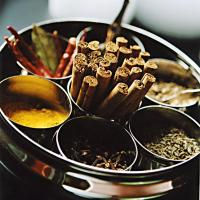
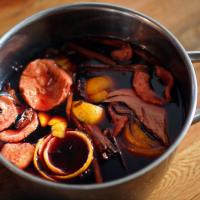

The inner bark from young shoots is removed and cured before drying. The thinner bark extracted from mid branches of the tree is said to be the best quality. The bark is peeled with a small curved knife and rolled into layers to produce aromatic quills that are left to dry before being trimmed. In Sri Lanka, cinnamon peeling is a specific occupation of the Salagama caste who continue these traditional practices.


True cinnamon from Sri Lanka benefits from climatic conditions brought on by the East and West monsoons, to produce a characteristic flavour that is softer and less bitter than that of cassia bark. Bark from C. zeylanicum trees forms cinnamon sticks that have multiple layers of a thinner and more pliable bark, resulting in a subtle, refined flavour.
Smelling good quality cinnamon quills is an easy and accessible way to discover and enjoy the distinctive composition and layers of aroma that makes this spice so well loved. As Jerry Seinfeld once said "Anytime someone says, "Ooh, this is so good - what's in this?" the answer invariably comes back, "cinnamon." Cinnamon. Again and again."
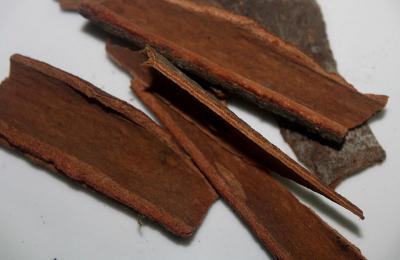
In Aromatherapy, C. zeylanicum essential oil has uses for digestive, circulatory, musculoskeletal and nervous system conditions. Cinnamon bark oil is a strong dermal irritant and sensitiser and therefore is not used in aromatherapy practice. Cinnamon leaf essential oil is less irritating and can be used topically with care, in low concentrations. The compound eugenol found in cinnamon oil has antiseptic, analgesic and rubefacient (counter- irritant) properties.
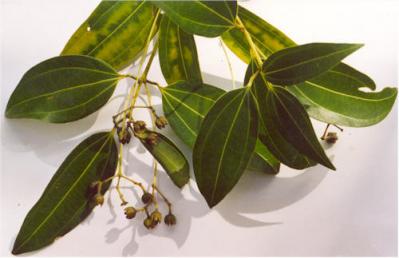
Essential Oil Production
Commercial production of cinnamon essential oil is focused in Sri Lanka, where cinnamon is known as "the spice of life". Cinnamon groves are located in the western and south-western regions of the island. Harvesting peaks in May-June and October-November.
An essential oil is steam distilled from either the dried inner bark or dried leaf of the cinnamon tree. A carbon dioxide extraction of cinnamon bark is also available. Essential oil content varies from 0.7 - 1% in the leaves or 0.5 - 2% in the bark. The bark is also used for preparation of a solvent extracted oleoresin for the flavour industry.
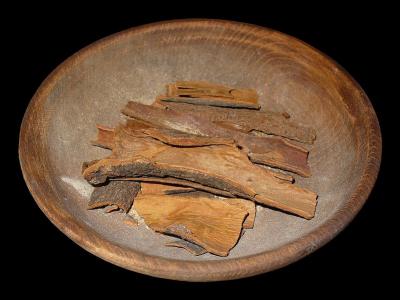
Cinnamon leaf oil is dominated by the compound eugenol (65 - 90%), which in itself has a warm, spicy, clove-like scent. The bark oil is comprised of up to 75% cinnamaldehyde, which imparts its characteristic aroma.
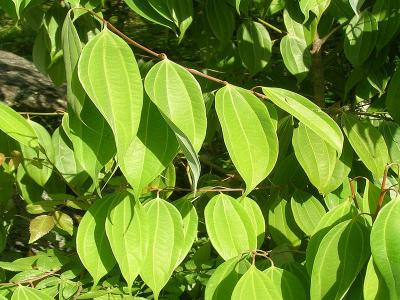
Cinnamomum zeylanicum Aromatic Profile
The scent of cinnamon leaf essential oil is described as pungent, warm, spicy, candy-like, reminiscent of clove (both are high in eugenol), with sweet, fruity nuances.
Cinnamon bark oil is strong, sweet, warm, fruity, spicy, with hints of clove, but differs from the leaf oil with a slightly floral middle note and a powdery base note. The bark oil has been favoured more so for perfumery, especially in oriental, gourmand or incense perfumes.
When you're smelling either of these essential oils, being mindful of its history and legend gives you a renewed appreciation of this very familiar scent.
Cinnamon acts as a base note in a composition, adding warmth, energy, sharpness, texture and layers to a blend.
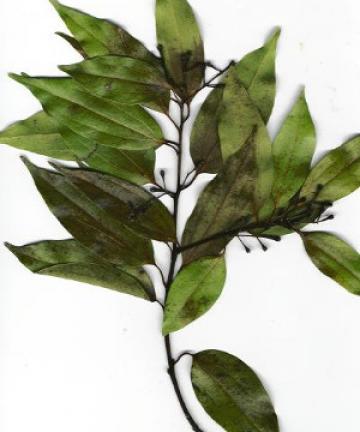
It blends especially well with other spice oils such as clove, coriander, pepper, ginger, cardamom, nutmeg, most citrus oils, frankincense, benzoin, lavander, vanilla, floral oils (in particular rose), peppermint, sweet marjoram and petitgrain.
Take care when adding this tenacious essential oil to your blend - use sparingly as too much can overpower and ruin your mix.
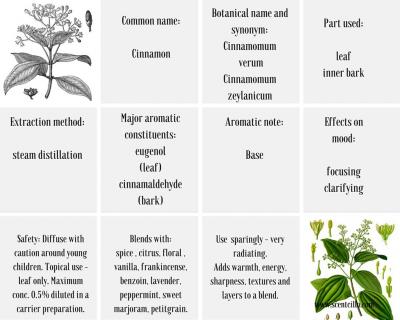
You can find cinnamon leaf essential oil in the Scentcillo Oracle essential oil blend.
This essential oil blend has been inspired by the divine rituals of the Pythia, priestess of Apollo at the Oracle of Delphi.
Oracle essential oil blend uses frankincense with other rich, spicy devotional scents such as myrrh, atlas cedarwood, patchouli and a touch of cinnamon, balanced with the lightness and sparkle of the citrus clementine essential oil.
This is a warming, enveloping blend that's a great room scent to diffuse in your space for cold, crisp weather or to help you in getting settled and focused when working or studying.

Did you like this post?
If you did, join us on the Scentcillo Facebook Page. If you know anybody else that would enjoy this post, be sure to share it with them.
Further Reading
- Strawberries with cinnamon rosewater glaze. AllRecipes.
- Citrus and cinnamon tea. Taste.
- How to make an orange and cinnamon fresh air simmer. WikiHow.
- Reducing boredom using scent to improve constructs critical to learning. Proceedings of the Human Factors and Ergonomics Society Annual Meeting. September 2014.
Results revealed that cinnamon significantly reduced feelings of boredom.
- Effects of peppermint and cinnamon odour administration on simulated driving alertness, mood and workload. North American Journal of Psychology 11(2):245-256. June 2009.
Cinnamon and peppermint administration led to increased ratings of alertness, decreased temporal demand, and decreased frustration over the course of a driving scenario.






